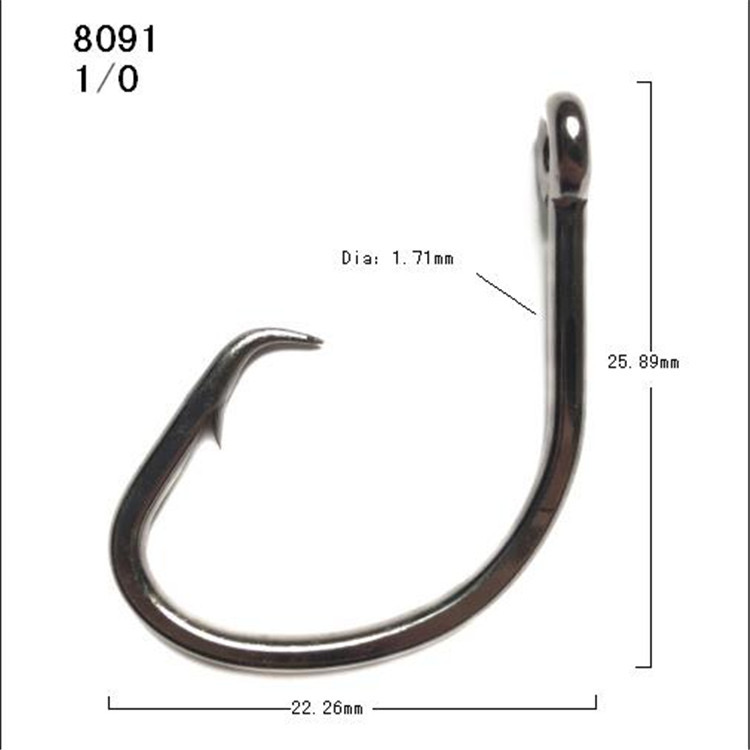Introduction: A circle hook is a specialized type of fishing hook that has gained significant popularity among anglers for its unique design and the numerous benefits it offers to both recreational and commercial fishers. This innovative hook design, as the name suggests, features a curved shank and a rounded point that aligns with the plane of the hook’s curvature, thus creating a shape reminiscent of a circular segment. Its structure diverges from traditional J-shaped hooks, which have been the norm in fishing for centuries.

Design and Construction: Circle hooks are characterized by their inherent ability to turn in the fish’s mouth upon being swallowed or when tension is applied to the line. The design typically includes a wide gap between the hook point and the shank, allowing the hook to easily penetrate the fish’s lip without necessarily needing to be ‘set’ by the angler. The curvature of the hook itself promotes self-hooking; once a fish takes the bait and moves away, the hook rotates into the corner of the fish’s mouth, minimizing deep hooking and injury to the fish.
Functionality and Benefits:
- Fish Welfare: One of the primary reasons for the widespread adoption of circle hooks is their contribution to conservation efforts. They reduce the risk of gut-hooking, thereby increasing the survival rate of released fish because they tend to hook more cleanly in the jaw rather than deeper tissues.
- Ease of Use: Novice anglers often find circle hooks easier to use since there’s no need for an immediate hook set. The design does the work for them, making it less likely to miss a strike or cause harm to the fish through improper handling.
- Hook-Up Ratio: Despite the seemingly passive nature of the circle hook, many anglers report higher hook-up ratios due to the hook’s tendency to find its way into the fish’s mouth regardless of how the fish reacts to the bait.
- Reduced Angler Effort: With circle hooks, the angler can focus on detecting a bite instead of trying to time the perfect hook set. Once a fish is hooked, the angler simply applies steady pressure to bring the fish in, leading to less stress on the equipment and the angler.
- Compatibility with Different Techniques: Circle hooks are versatile and can be used in various types of fishing, including bottom fishing, drift fishing, and even fly fishing with specific adaptations. They are effective for live bait, cut bait, and artificial lures alike.

Evolution and Variations: Over time, circle hooks have evolved to cater to different species and fishing scenarios. There are now multiple variations, such as offset circle hooks, non-offset circle hooks, and different sizes to accommodate everything from panfish to giant marlin. Moreover, manufacturers have optimized materials, finishes, and coatings to improve corrosion resistance and durability.
In conclusion, the circle hook represents a significant advancement in fishing tackle technology, transforming not only the mechanics of hooking but also influencing ethical angling practices. By promoting catch-and-release success and reducing unnecessary harm to fish populations, these hooks are increasingly becoming a staple in modern fisheries management strategies and eco-conscious fishing communities worldwide.